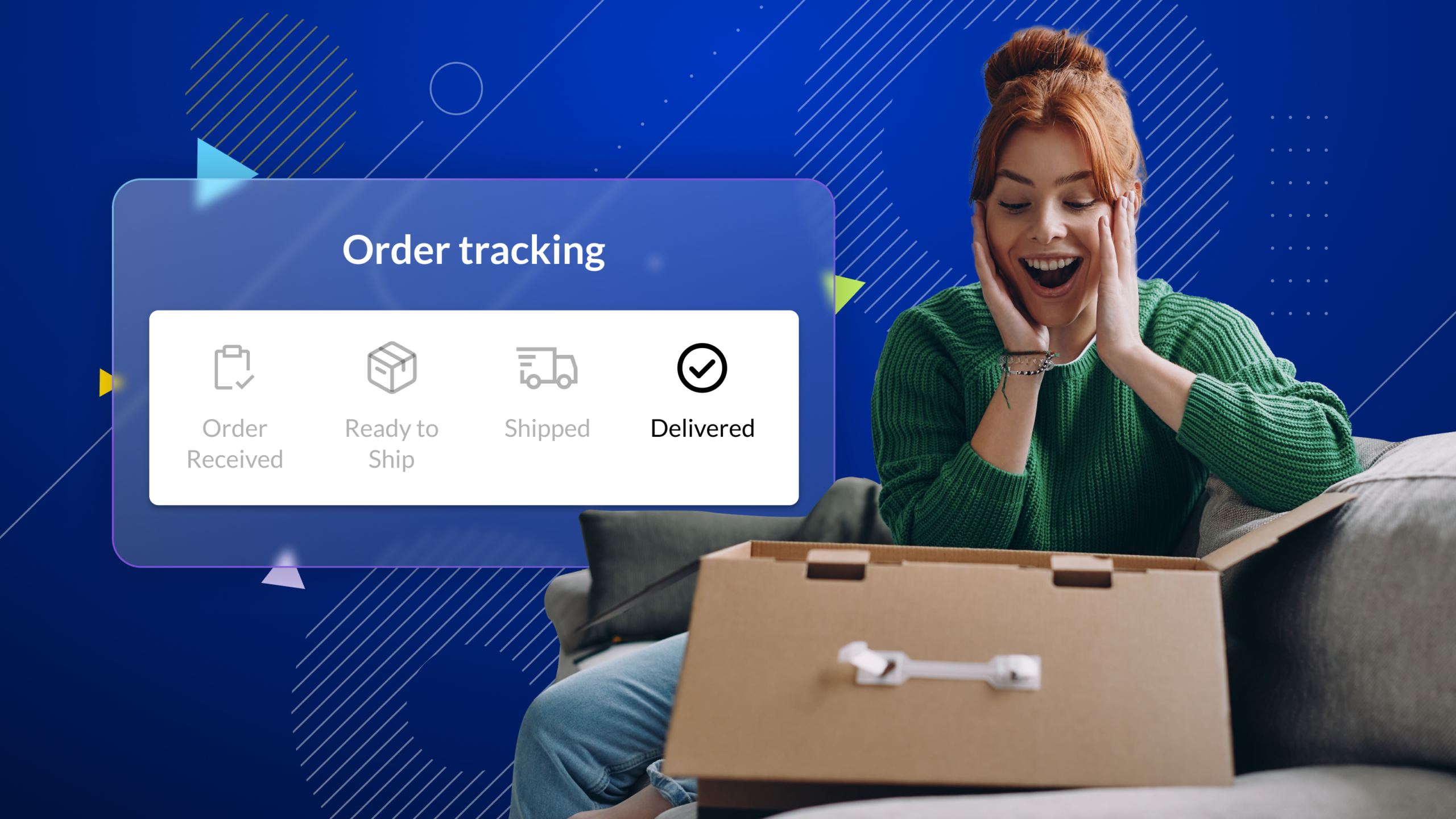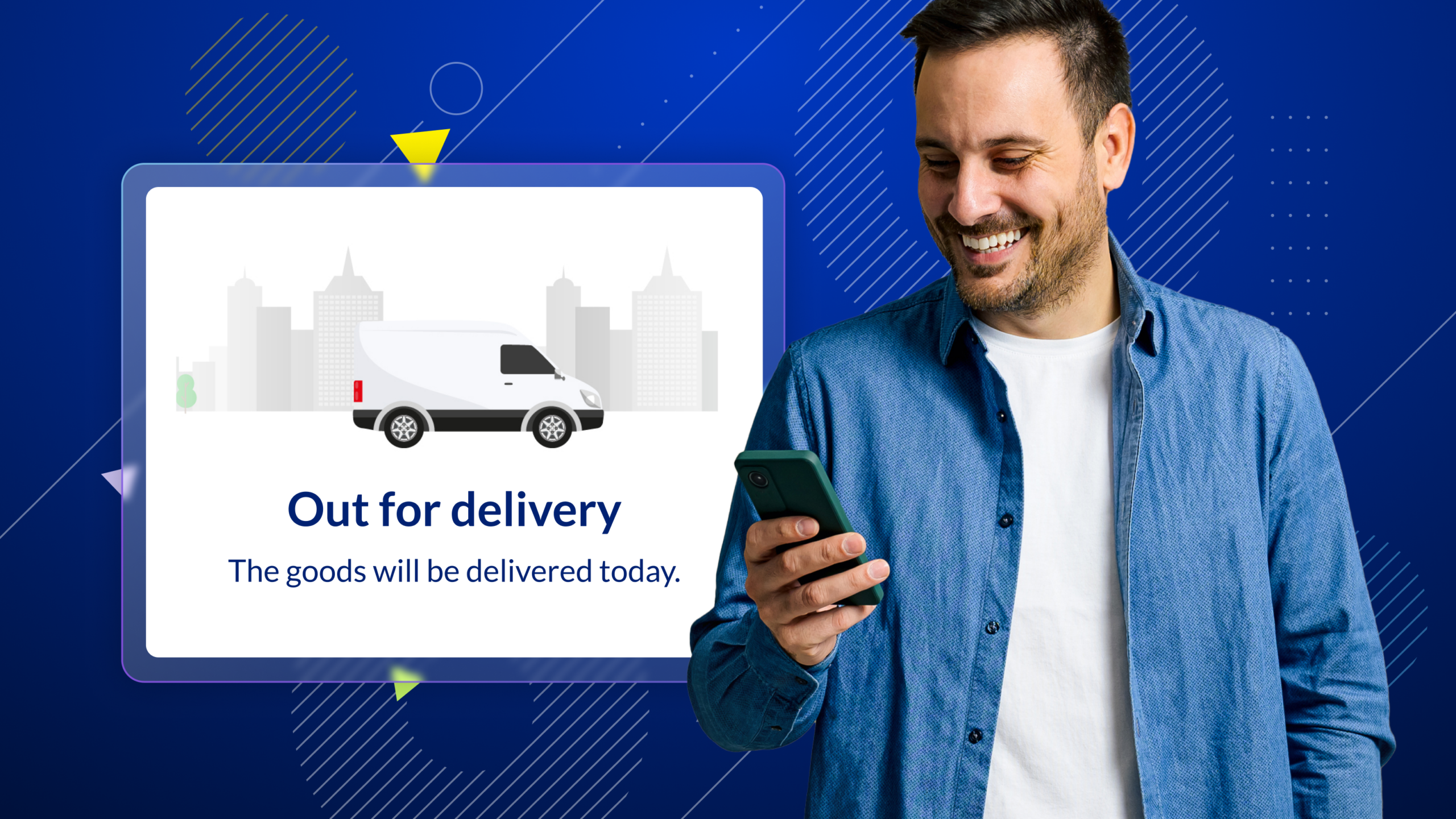Contents
What is delivery status?
Published on: December 18, 2023
Updated: January 18, 2024
In the context of ecommerce, delivery status is the current state or position of a customer’s order as it goes through the delivery process. It indicates where an item is—in terms of its physical and geographical location, as well as its status in the order fulfillment lifecycle.
The delivery status sheds light on the position of the order from the moment the order is placed to the point it reaches the customer’s hands. It also provides transparency and allows customers to anticipate the arrival of their goods so they can plan accordingly.
Meanwhile, tracking the delivery status on the merchant side allows you to identify and address any potential issues or delays that may arise.
What are the different types of delivery status?
| Delivery status | Description |
|---|---|
| Order placed | After successfully completing checkout, the order is registered in the merchant's system, marking the start of the post-purchase journey |
| Order confirmed | The merchant verifies receipt of payment and confirms that the order is legit |
| Order processing | The order is being readied for shipment, potentially involving product picking, packing, and labeling |
| Shipped/Dispatched | The delivery service now has the order, and customers usually receive a tracking number |
| In transit | The package is moving between locations or on its way to the recipient, typically taking the most time during long-distance shipments |
| Out for delivery | The order is on its last leg of the journey, expected to be delivered shortly |
| Delivered | The customer's address has successfully received the package |
| Attempted delivery | A courier tried delivering the order, but some issue prevented its completion |
| Canceled | Due to reasons like stock issues or payment problems, the order doesn’t go through |
| Held at customs | For international orders, customs might inspect or await clearance for the package |
| Awaiting pickup | Customers can collect their ready at the retailer or courier pickup location |
| Delayed | External factors like weather or operational challenges have postponed the delivery |
| Lost | The delivery network can't locate the package |
Order fulfillment (and the entire post-purchase customer journey, for that matter) comprises several steps and phases, which is why there are various types of order delivery statuses. It’s also worth noting that since merchants and carriers have different processes, the specific terms and statuses might vary.
That being said, here is a general list of the different delivery statuses in ecommerce.
Order placed
This is the first delivery status that comes up, and it takes place when the shopper has successfully completed the checkout process and the order has been registered in the system. At this stage, the merchant is notified of the new order and can start preparing for its fulfillment. This is the beginning of the post-purchase journey for the customer.
Order confirmed
Here, the merchant has acknowledged the order and confirms that payment has been received. This gives assurance to the customer that their transaction was successful. As the merchant, you can use this phase to cross-check inventory and ensure product availability.
Order processing
This status indicates that the order is being prepared for shipment. Depending on your warehouse process, this can involve picking the product from the warehouse, packing, and labeling. During this phase, it’s best to conduct quality checks to ensure the product meets your standards before being dispatched.
Shipped/Dispatched
The order has been handed over to a delivery service and is on its way to the customer. This status is typically accompanied by a tracking number so customers can get updates about their package’s whereabouts.
In transit
This means the package is currently being moved either between distribution centers or is en route to the delivery location. It’s the phase where the package spends most of its time, especially for long-distance or international shipments. This status will change once the package reaches the nearest distribution center to the recipient.
Out for delivery
This is the last leg of the package’s journey before reaching its destination. This status indicates that the order is on a final delivery vehicle, typically indicating that it will be delivered that day. This is also the status indicating that an order is at the last mile. At this stage, it’s helpful to offer last mile delivery tracking so customers can ensure that someone is available to receive the package.
Delivered
The package has been successfully delivered to the customer’s address. As the merchant, you may want to proactively alert your customers once the product is delivered.
That way, they can check the package for any damages or discrepancies as soon as it’s received. A successful delivery usually concludes the order’s life cycle unless there are post-delivery issues. (Which may trigger your returns management process.)
Attempted delivery
This delivery status comes up when the courier attempts to deliver the goods, but couldn’t for one reason or another (e.g., no one was home, the address was incorrect). The courier will often leave a note or send a notification about the failed attempt, with instructions on rescheduling or picking up the package from a local depot.
Canceled
The order has been canceled either by the customer or the seller due to various reasons (e.g., out of stock, payment issues). Customers should expect a full refund, and sellers might offer discounts or promotions as goodwill gestures in some instances.
Held at customs (for international shipments)
If this status comes up, it could mean the package is being inspected or is awaiting clearance by customs authorities. Customs checks are standard procedures for international shipments, but sometimes it may lead to delays if there are issues with documentation or duties.
Awaiting pickup
If you offer order pickup services, then this status indicates that the order is ready to be collected. Be sure to remind your customers to bring any required identification or confirmation details when going for the pickup.
Delayed
Weather, operational backlogs, or other disruptions can lead to delivery delays. During these instances merchants and carriers must communicate the expected duration of the delay to set customer expectations.
Lost
This is a rare status indicating that the package cannot be found in the delivery network. This is an unfortunate situation, and customers are typically either refunded or sent a replacement by the merchant, depending on the store’s policy.
How should merchants communicate delivery status to customers?
The best way to convey an order’s delivery status to customers is to do it proactively, ideally using delivery notification software. It’s best to send updates in ways that are accessible and convenient for your customers.
Consider the following.
Online order portals
Have a dedicated portal that gives customers a centralized place to track their orders. For best results, host your order portal on your own domain so your customers aren’t redirected to a third-party website.
Aside from maintaining consistency, a branded order tracking page keeps people on your website, opening up opportunities for them to browse your catalog and make additional purchases. In fact, branded order portals pave the way for post-purchase upselling and cross-selling.
Research by Baynard Institute found that 64% of consumers value the ability to check their order’s delivery status on the retailer’s ecommerce website. Yet, Baynard also found that “56% of e-commerce sites fail to integrate all tracking information and events within the site itself — relying instead on a third-party tracking site to provide the information users need at what can often be an anxious and critical time in the e-commerce shopping experience.”
Email notifications
Email is one of the most common ways to send order and delivery status information, and for good reason: it’s widely used and offers a lot of flexibility around design and content.
Emails allow you to provide detailed information about the order, tracking numbers, last mile tracking details, and expected delivery dates.
Plus, emails can be customized with your brand aesthetics, thus enhancing the customer experience and helping you maintain brand consistency.
SMS order notifications
Offering quick, concise updates straight to a customer’s mobile phone ensures that their order status is right at their fingertips.
SMS is particularly effective for short, timely updates, like “Your order is out for delivery.” Plus, text messages have a high open rate, meaning most recipients will see and read the message promptly.
Data cited by Tatango shows that “90% of SMS marketing messages are opened within the first 3 minutes” and “78% of consumers say that SMS marketing is the fastest way to reach them.”
All that being said, be sure to follow consumer protection laws and SMS best practices. The last thing you want is for your text messages to be perceived as spam (or worse — an SMS scam).
Instant messaging apps
Platforms like WhatsApp and Facebook Messenger have become popular channels for businesses. They allow for real-time communication and can be integrated with chatbots to answer frequently asked questions or provide automated updates, making the post-purchase journey more interactive and engaging.
Mobile app notifications
If you have a mobile application, push notifications can be an effective way to keep customers informed. This method provides real-time alerts on the status of their order. And just like with a branded tracking page, mobile notifications keep users inside your app, which can drive engagement and sales. Not to mention that by keeping users within your app, you can offer personalized recommendations, promotions, or upsell opportunities.
Learn More About parcelLab's Product Suites
Provide a predictive delivery date that increases conversions, reduces uncertainty, and improves customer satisfaction.
Learn moreEnhance your post-purchase journey with personalized communications that keep customers informed every step of the way.
Learn moreTurn potential customer dissatisfaction into an opportunity for revenue retention by digitizing your returns process.
Learn moreTransform Your Post-Purchase Experience
Learn more about how parcelLab can get you up and running quickly.
Book a demo
